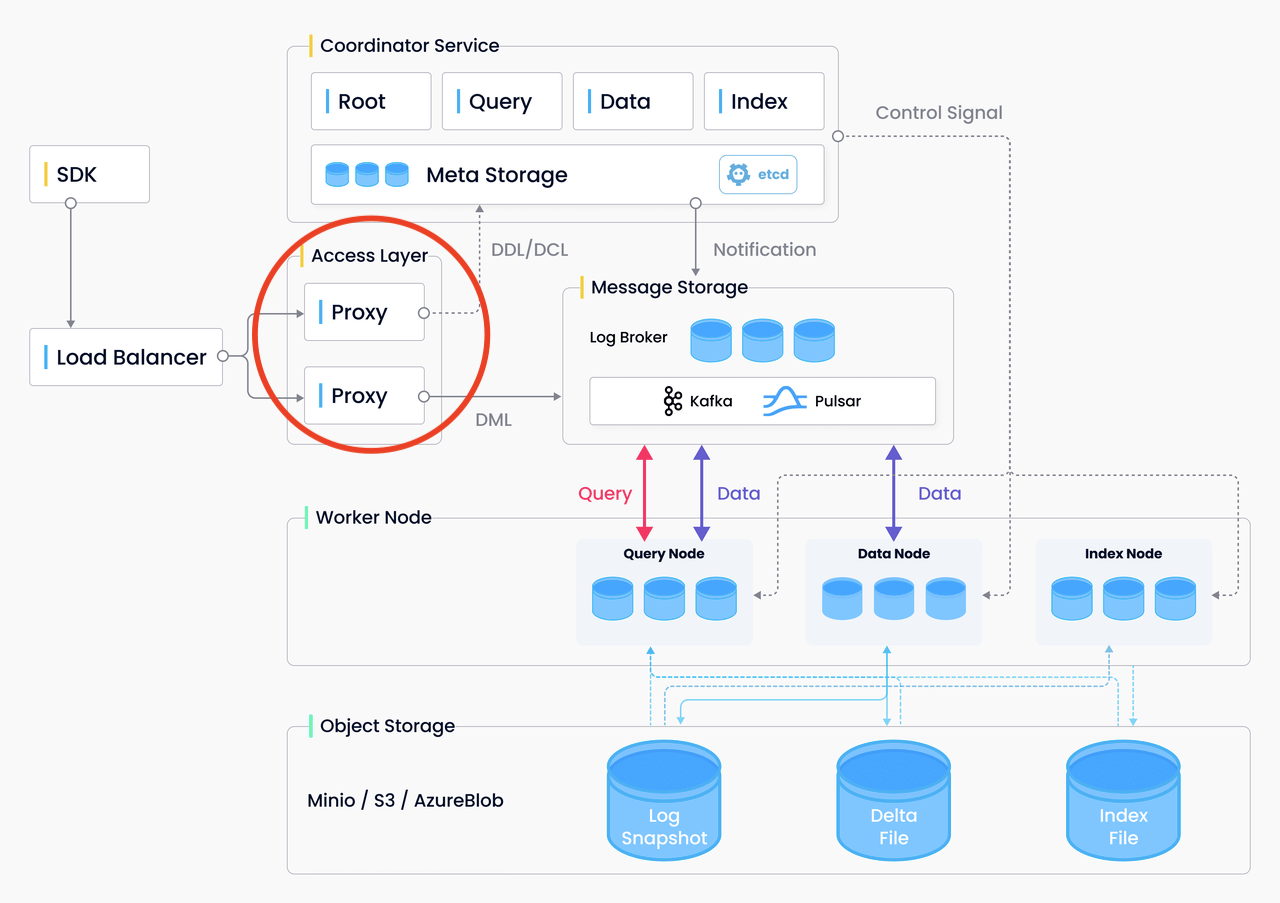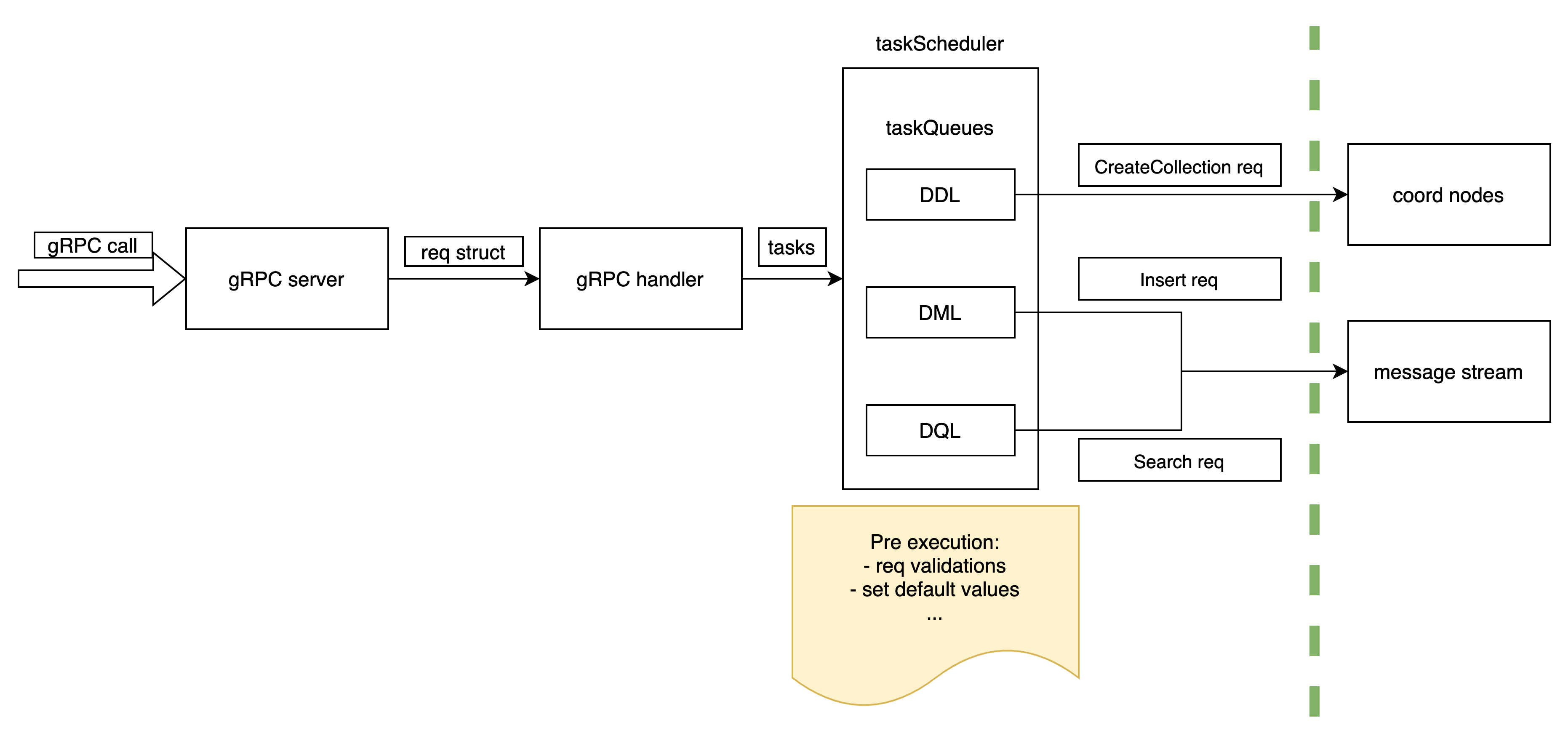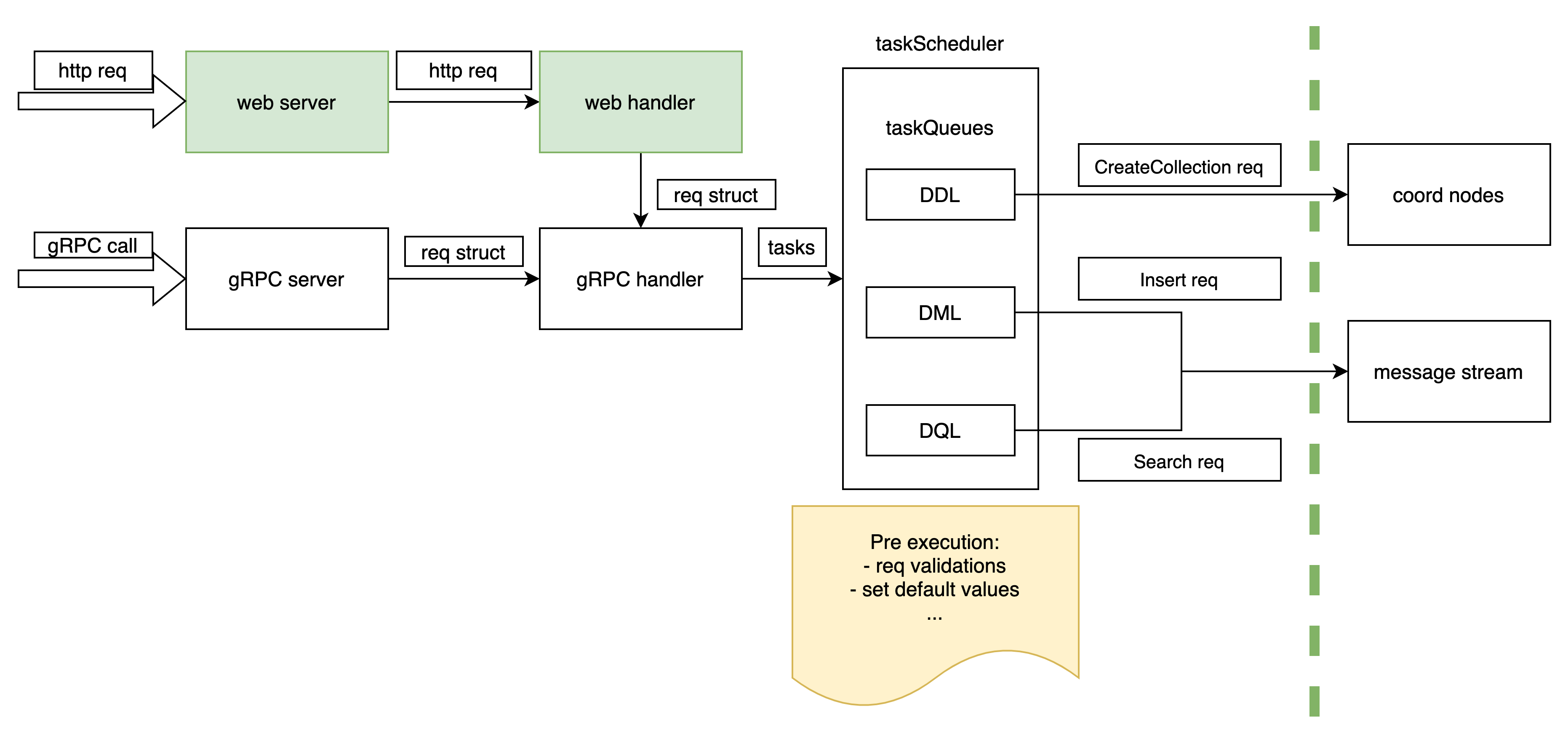
Current state: Under Discussion
ISSUE: https://github.com/milvus-io/milvus/issues/7700
PRs:
Keywords: Restful API
Released:
Implement a http server on proxy module, serves http request and convert to same request type as grpc request.
Milvus 1.1 used to support restful API, we've also seen many other search engines such as elastic search and solr supports both http and rpc requests. It would be much easier for applications written in language such as PHP and rust to use http to utilize milvus.
(see https://github.com/milvus-io/milvus/blob/master/internal/proto/milvus.proto)
According to gRPC, the HTTP resource names can be:
APIs: TODO: translate gRPC interface in RESTful API.
service MilvusService {
// (omit api version prefix)
// POST /collections
rpc CreateCollection(CreateCollectionRequest) returns (common.Status) {}
// DELETE /collections/:collectionName
rpc DropCollection(DropCollectionRequest) returns (common.Status) {}
// GET /collections/:collectionName
rpc HasCollection(HasCollectionRequest) returns (BoolResponse) {}
// PUT /collections/:collectionName/load
rpc LoadCollection(LoadCollectionRequest) returns (common.Status) {}
// DELETE /collections/:collectionName/load
rpc ReleaseCollection(ReleaseCollectionRequest) returns (common.Status) {}
// GET /collections/:collectionName/schema
rpc DescribeCollection(DescribeCollectionRequest) returns (DescribeCollectionResponse) {}
// GET /collections/:collectionName/statistics
rpc GetCollectionStatistics(GetCollectionStatisticsRequest) returns (GetCollectionStatisticsResponse) {}
// GET /collections-list
rpc ShowCollections(ShowCollectionsRequest) returns (ShowCollectionsResponse) {}
// POST /collections/:collection/partitions
rpc CreatePartition(CreatePartitionRequest) returns (common.Status) {}
// DELETE /collections/:collection/partitions/:partition
rpc DropPartition(DropPartitionRequest) returns (common.Status) {}
// GET /collections/:collection/partitions/:partition
rpc HasPartition(HasPartitionRequest) returns (BoolResponse) {}
// PUT /collections/:collection/partitions/:partition/load
rpc LoadPartitions(LoadPartitionsRequest) returns (common.Status) {}
// DELETE /collections/:collection/partitions/:partition/load
rpc ReleasePartitions(ReleasePartitionsRequest) returns (common.Status) {}
// GET /collections/:collection/partitions/:partition/statistics
rpc GetPartitionStatistics(GetPartitionStatisticsRequest) returns (GetPartitionStatisticsResponse) {}
// GET /collections/:collection/partitions-list
rpc ShowPartitions(ShowPartitionsRequest) returns (ShowPartitionsResponse) {}
// ...
} |
Web module
As we can see from the milvus v2 architecture, all the gRPC requests first go into the Access Layer, which is the milvus-proxy service, where the requests are then propagated to other funtional services of milvus. So that's where we should put our web server.

Let's take a close look inside the milvus-proxy

Above is the dataflow of milvus-proxy while receiving requests, modules left of the green dotted line is inside milvus-proxy
So the best way to reuse code is as below:

We integrate these green colored modules to milvus-proxy, so that it can handle http calls.
After the http request parsed, it's translated into the same req struct as we mentioned above, and the rest things can be done by the gRPC handlers which were already implemented.
Web Framework
We'll use golang for easy integration with current proxy. And we'll use GIN is the most popular and also easy to use golang web framework.
Preparation:
Coding:
Testing: